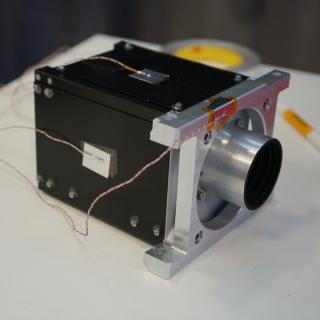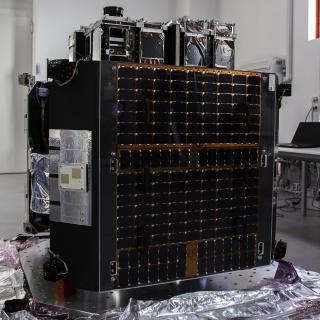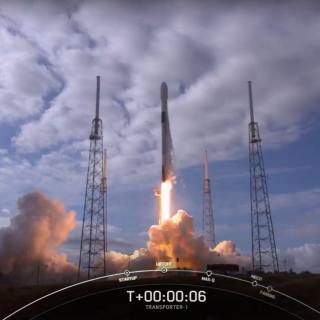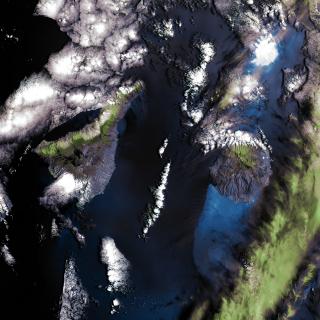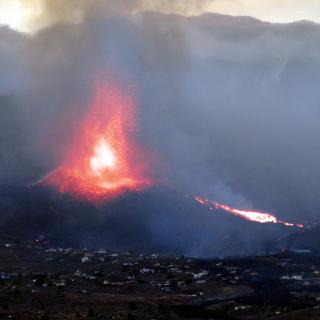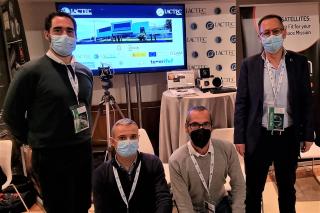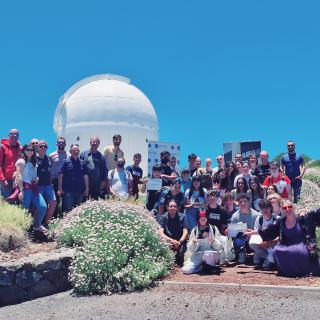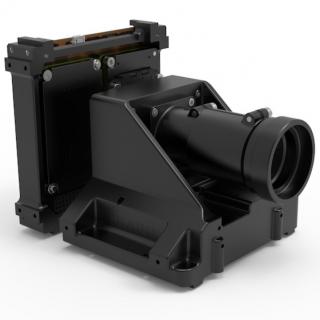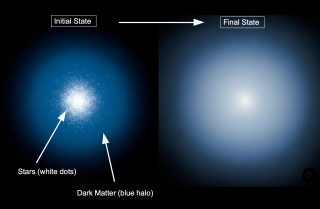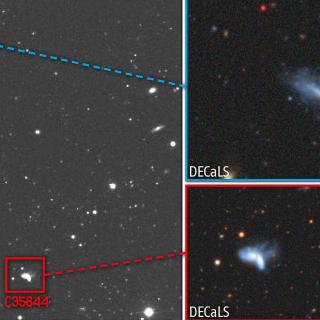The infrared camera DRAGO-2, developed by the team at IACTEC-Space and integrated into the satellite carrier ION-scv007 Glorious Gratia of the Italian company D-Orbit is now in orbit around the Earth after its successful launch yesterday on board a Falcon 9 rocket of Space-X. The Transporter-6 mission of SpaceX lifted off without a hitch at 14: 56 UT from platform 40 of the Space Force Station at Cape Canaveral, Florida (USA).
Yesterday afternoon students, families, the media and IACTEC personnel were in the viewing room which had been installed in the multi-use area of IACTEC in the Technological Park of Las Mantecas (La Laguna, Tenerife) to watch the placing in orbit of the infrared camera. The Teidesat group of the University of La Laguna broadcast the event live, together with interviews of the staff involved in the project.
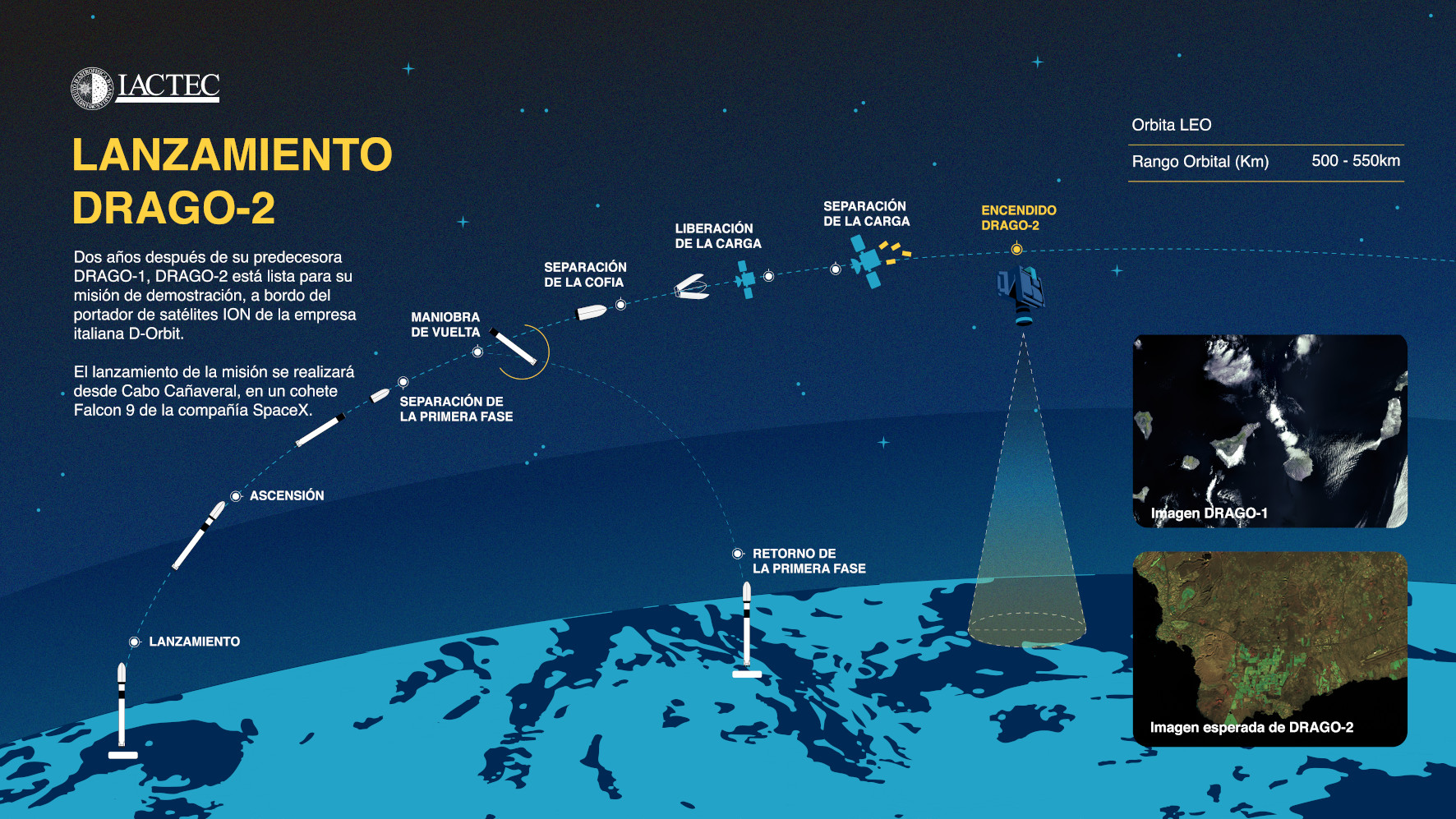
DRAGO-2 (Demonstrator of Remote Analysis of Ground Observations), the second instrument developed completely in IACTEC-Space, is a space-borne camera which works in the short wave infrared, and which is designed for Earth observation. It is the successor of DRAGO-1, which was put into orbit two years ago, and which has been a great success. The basic improvement of DRAGO-2 over DRAGO-1 is the resolution of the camera. “We have gone from 300 meters per pixel to 50 meters per pixel” explains Alfonso Ynigo, systems engineer of IACTEC-Space. “With DRAGO-1 we could see an area of width around 190 km, and with a well aligned photo you could see Tenerife and Gran Canaria. With DRAGO-2 if we point at Teide we can see the peak of the volcano and part of La Orotava, but with much more detail. It will be as if we made a zoom”.
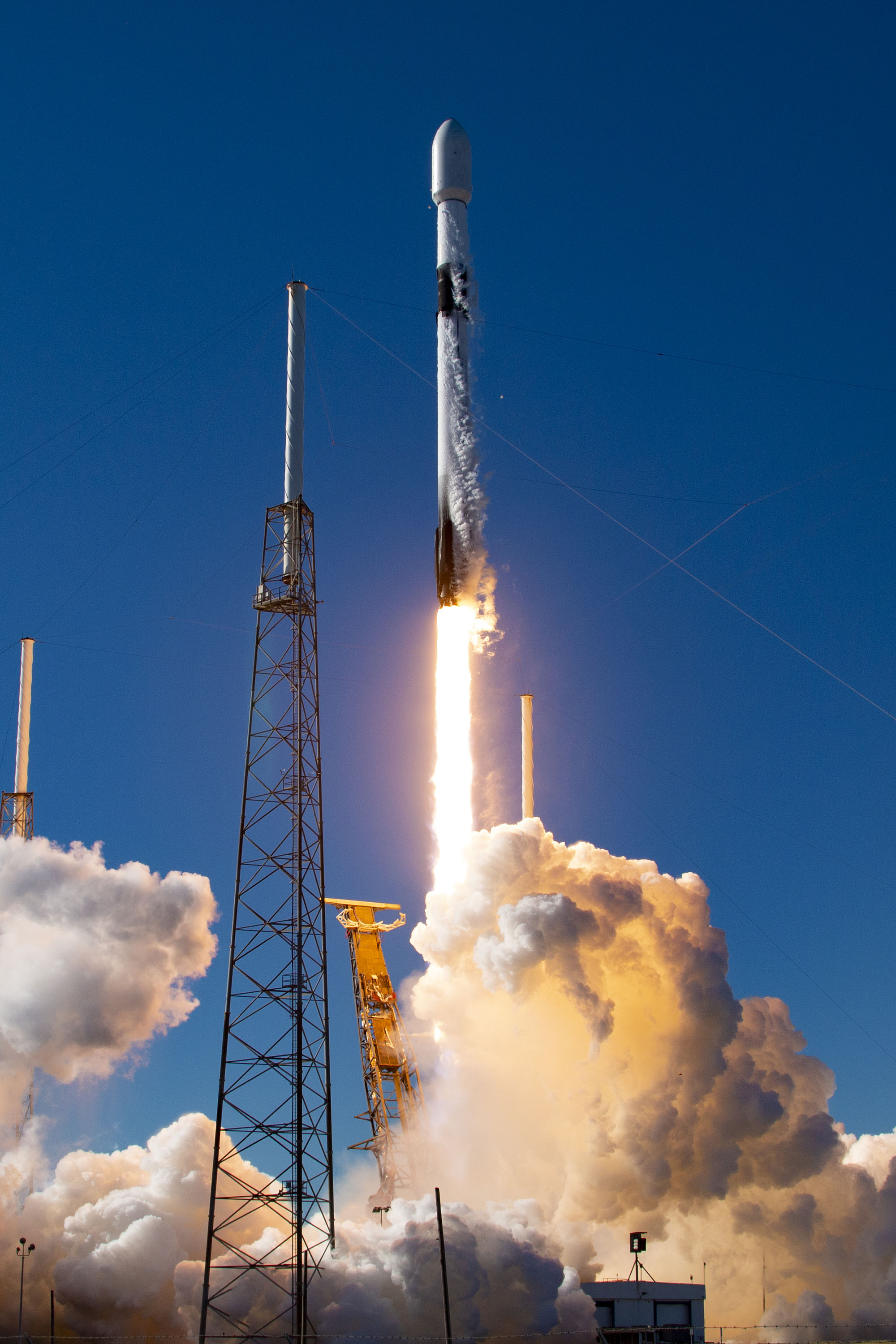
For Rafael Rebolo, the Director of the IAC, these two first instruments developed entirely in Tenerife which view the Earth from space are only a first step. The team at IACTEC-Space are now working to develop VINIS, a new instrument for Earth observation, more sophisticated, which incorporates observations in multiple bands in the visible and the infrared. This new space telescope will observe the Earth at much higher resolution, of only 5 meters per pixel.
After DRAGO-1 and DRAGO-2, in the future we will not only develop instrumentation for satellites, but also take the leap of launching the first Canary microsatellite for Earth observation, called ALISIO, which “should be ready to fly at the beginning of next year “predicted Rafael Rebolo. This satellite will include a DRAGO-2 camera and an optical communications module. “But our ambition is to have small observatories which can view the sky from space” notes the director. After ALISIO we foresee the launch of IACSAT, the first space telescope of the IAC, dedicated entirely to astronomical observation.
With a weight of little more than 1 kilogramme and a power consumption of 6 watts, comparable to a normal led light bulb, DRAGO-2 will complement the work of DARGO-1 “depending on the study which is needed, we will need either a camera with a wide field, or one which gives more detailed images”, says Patricia Chinchilla, in charge of communications at IACTEC-Space. Just like DRAGO-1, the new orbiting camera will observe in the near infrared “this completes the images which are obtained at other wavelengths, such as the visible, which is the light with which our eyes see, and which we find most familiar”, explains Chinchilla. “This is very useful, for example, to monitor fires. The infrared lets us see through the smoke and shows the emergency services the position of the flames in real time, which can help them choose the best routes for evacuation”. Other applications of the DRAGO cameras are to monitor volcanic activity, to follow the state of the humidity of vegetation and of crops, the detection of oil spills in the sea or keeping watch on desertification.
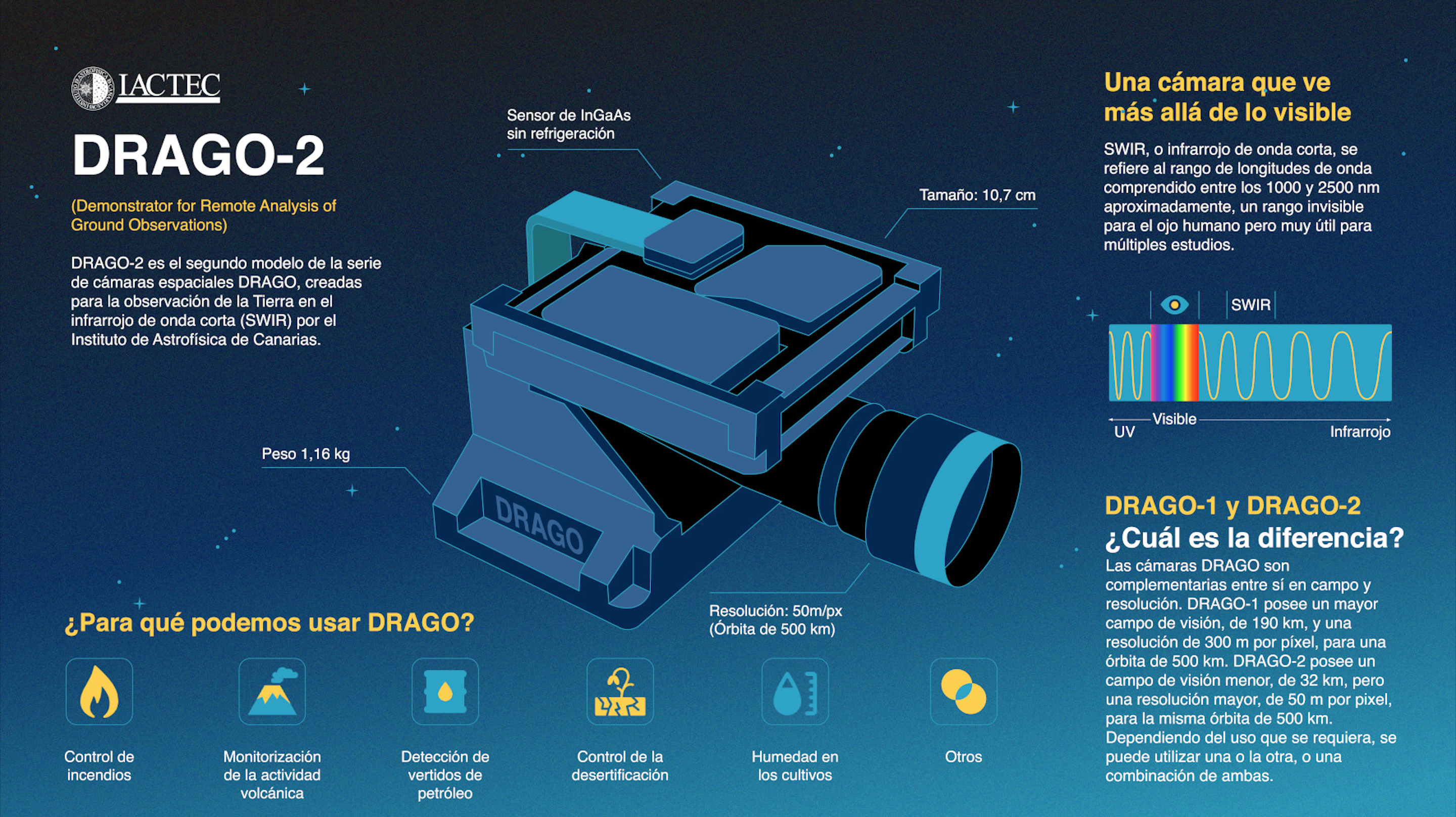
The working team of IACTEC-Space is largely funded by the Cabildo of Tenerife, under a programme of technological training granted to the IAC over several years. IACTEC-Space is a programme integrated into IACTEC, the area of technological and business collaboration of the IAC, which is supported financially –Programme of Training within the Programme TFINNOVA of the Strategic Framework of Island Development (MEDI) and the Canary Development Fund- and of infrastructures (IACTEC building) of the Cabildo Insular of Tenerife. IACTEC-Space is financed by the Plan of Recovery, Transformation, and Resilience of the Government of Spain, and by the Centre of Technological Development and Innovation (CDTI).
More information: Web of the IACTEC-Space project: https://www.iac.es/en/projects/iactec-space
Contact at IACTEC:
- Patricia Chinchilla: pcg [at] iac.es (pcg[at]iac[dot]es)
- Álex Oscoz: aoscoz [at] iac.es (aoscoz[at]iac[dot]es)
- Alfonso Ynigo: alfonso.ynigo.rivera [at] iac.es (alfonso.ynigo.rivera@iac.e)

